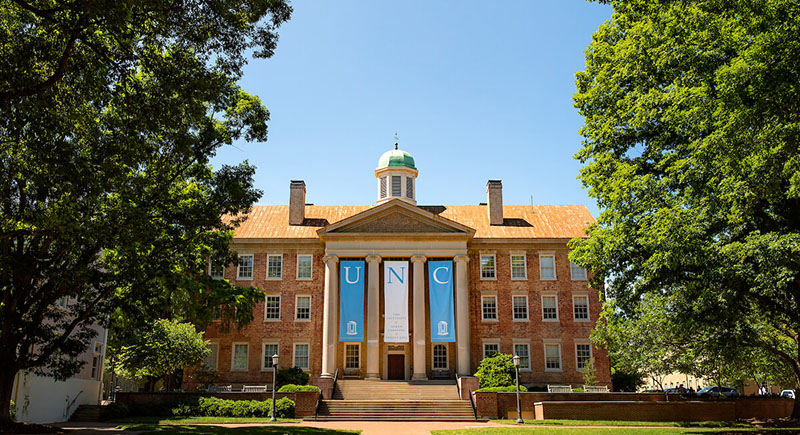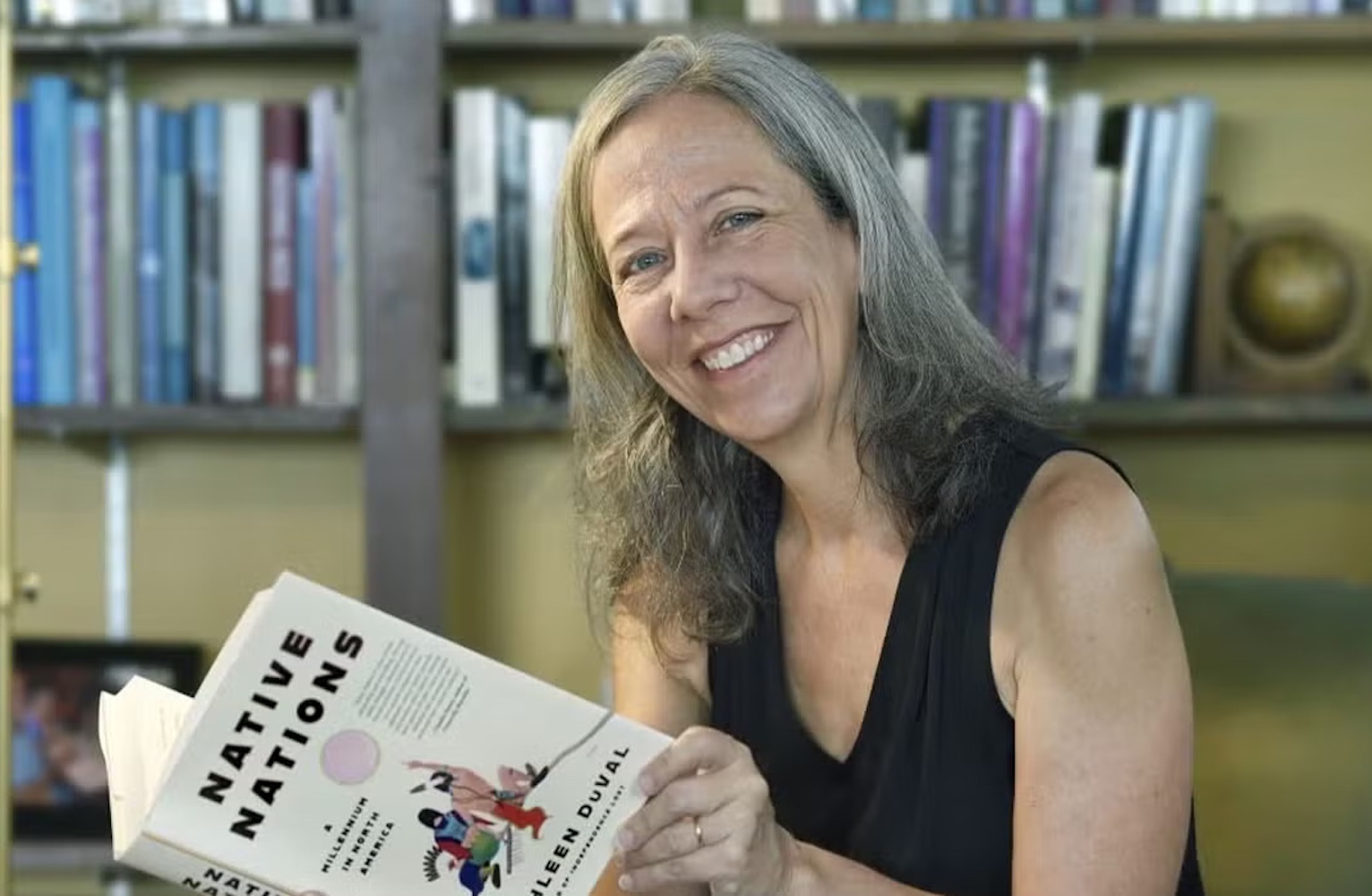
A unique tradition reaches a milestone in expanding research collections at Carolina.
By Claire Cusick
North Carolina’s Hanes family has continued its almost 100-year tradition of celebratory support of the University Libraries by helping to purchase the Libraries’ 10-millionth volume. The collection of 100 items, now part of the Rare Book Collection at Wilson Library, showcases the development and implementation of duplicating technologies.
In 1929, the family gave the University Libraries the gift that helped establish the Rare Book Collection. Since then, the family, through its foundation, has supported the acquisition of every milestone millionth volume, including the latest one.
The new collection emphasizes the ways humanity has made copies of the written word over time. It contains treasures such as Benjamin Franklin’s handwritten instructions on how to use a 1782 “Watt’s copy press.”
There are also publications made on spirit printers — those purple-ink “ditto machines” ubiquitous in 20th-century America. Each item reveals elements of the culture that produced it, from government and corporate communications, to political and social movements, to artistic and literary uses.
Some examples include:
- The first book published in America using tanka, a Japanese poetic form, mimeographed by Japanese-American poet and writer Sadakichi Hartmann (1904).
- A moving and hugely important collection of publications produced in Dachau by freed prisoners in the first weeks after liberation, using Nazi typewriters and mimeograph machines (1945).
- A blueprinted samizdat (a clandestinely printed and circulated publication) of verse and lyrics from the Soviet singer Vladimir Vysotsky (1980). While some samizdat were political in nature, many contained cultural expressions of literature and music that were outside of Soviet-sanctioned art.
María R. Estorino, vice provost for University libraries and University librarian, refers to the 10-millionth volume as a technology collection.
“This collection shows the technologies that have been created and used in the transmission of knowledge,” Estorino says. “In the same way we talk about the ancient forms that led to the development of the book, this is part of that history. These technologies have sometimes been as important to the written transmission of knowledge as the ancient forms.”
In that way, this latest milestone volume continues the theme of the Libraries’ 9-millionth volume, a collection of close to 900 woodcut printing blocks from the Propaganda Fide press dating from 1625 to 1850. The blocks’ role as printing technology, and in global history, makes them valuable to research in many fields, and also a tribute to books and bookmaking.
The technologies have changed over time, but the human desire to share ideas, discoveries and creative expression is timeless.
— María R. Estorino
“Each of these millionth volumes represents a connection between Carolina and the world of knowledge,” says Estorino. “The technologies have changed over time, but the human desire to share ideas, discoveries and creative expression is timeless.”
The Hanes family is honored to continue its almost century-long tradition of supporting the Rare Book Collection, says F. Borden Hanes Jr. ‘67, chair of the John Wesley and Anna Hodgin Hanes Foundation. “This is a unique situation that my grandfather and his siblings helped establish a long time ago, and we’ve kept it going,” Hanes says. “We’ve supported the University in multiple arenas, but I think the Rare Book Collection is the one that we’re proudest of.”
Hanes began his involvement with the RBC in 1984, when he helped the Foundation’s purchase of the 3-millionth volume, a collection of more than 500 titles printed by the Estienne family of scholar-printers in sixteenth-century France. At the time of purchase, another public university library was interested in acquiring it, but Carolina won out, Hanes says, and he found that especially satisfying. “Scholars come from all over the world to Chapel Hill to study these materials, and I’m proud of that,” he said.
Forty years later, Hanes says he is thrilled to watch the RBC grow in impact and breadth at this important moment in the building that houses it, the Wilson Special Collections Library.
“I’m just beside myself with how well things are evolving in the Rare Book Collection,” he says. “Now I want to see Wilson Library renovated as it should be, so that the Rare Book Collection housed there will be safe for generations to come. It will be a very complex renovation process, I realize, but I look forward to participating to the best of my ability, because it’s important to the University.”




